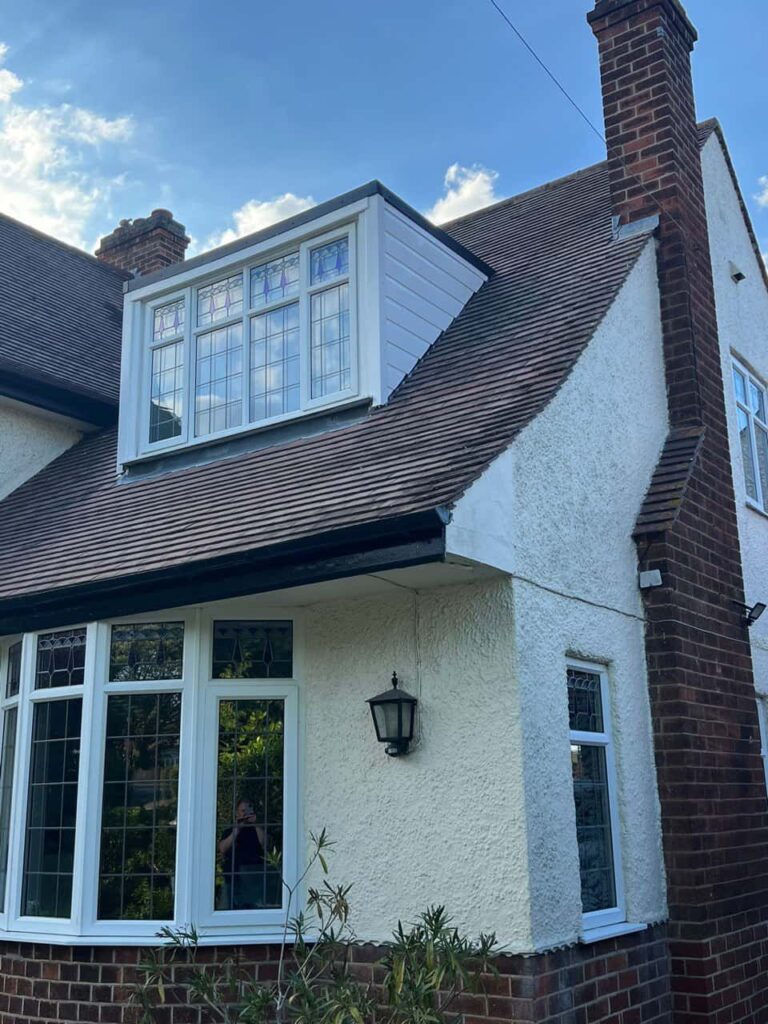Gable end roofs are a popular and distinctive roofing style seen across homes in the UK, particularly in areas like New Milton, Hampshire. While they provide excellent protection from the elements and add aesthetic appeal, like all roofs, they are subject to wear and tear over time. Spotting early signs of damage is crucial in preventing more serious and costly repairs. At MCM Roofing Repairs New Milton, we specialise in maintaining and repairing gable end roofs, and in this blog post, we’ll help you understand how to identify signs of wear and tear before it’s too late.
1. Cracks in the Gable Walls
The gable end, being the vertical wall between the edges of the roof, is often exposed to harsh weather conditions. Over time, you may notice cracks appearing in the masonry or brickwork of the gable end.
- What to Look For: Small hairline cracks can develop into larger structural problems if left unchecked. These cracks can allow water to seep into the walls, causing further deterioration.
- What It Means: Cracks could be a sign of shifting or settling foundations, or simply the result of weather exposure. If you spot cracks early, they can be repaired before causing more extensive damage.
2. Loose or Missing Roof Tiles
Gable end roofs are particularly exposed to wind, especially in areas like New Milton where coastal winds can be strong. This can lead to roof tiles becoming loose or dislodged.
- What to Look For: Inspect your roof for any missing or loose tiles, especially after storms or heavy winds. Also, check for any tiles that have become cracked or chipped.
- What It Means: Loose or missing tiles leave your roof vulnerable to water damage and leaks. If not addressed quickly, this can lead to structural damage in the roof and the need for costly repairs.
3. Damaged Flashing
Flashing is the material used to seal joints and protect vulnerable areas of the roof, particularly around chimneys and vents. Damaged or deteriorating flashing is a common issue on gable end roofs.
- What to Look For: Check for any signs of rust, cracks, or separation in the flashing. Damaged flashing can often be spotted by inspecting the areas around chimneys, skylights, and other roof penetrations.
- What It Means: Faulty flashing can allow water to seep into your roof, leading to leaks and rot in the roof structure. Repairing or replacing flashing early is essential to prevent major water damage.
4. Sagging or Drooping Gables
One of the more serious signs of wear on a gable end roof is sagging or drooping in the roof structure. This is often a sign of underlying issues with the roof’s framework or supports.
- What to Look For: Stand back from your home and observe the straightness of the gable end roofline. Any noticeable sagging or drooping should be investigated immediately.
- What It Means: A sagging gable could indicate problems with the roof’s internal supports or damage to the roof’s structure due to water ingress or age. This requires prompt professional attention to prevent further deterioration or collapse.
5. Leaks and Water Stains
Water stains on ceilings or in the attic are often a sign of a leak in the roof. These leaks may be caused by damaged tiles, cracked gable walls, or faulty flashing.
- What to Look For: Inspect your attic regularly for any signs of dampness, mould, or water staining. Water stains are usually yellow or brown and indicate that water has penetrated the roof.
- What It Means: Water leaks can lead to serious structural damage if not repaired quickly. They can also result in mould growth, which poses health risks. Identifying leaks early allows for timely repairs, reducing long-term damage.
6. Debris in Gutters
The state of your gutters can provide useful clues about the condition of your roof. If you find a significant amount of shingle granules or roof debris in your gutters, it may be a sign that your roof is deteriorating.
- What to Look For: Regularly check your gutters for an accumulation of debris, shingle granules, or pieces of roof tiles. Also, ensure that gutters are properly attached and draining water away from the gable end walls.
- What It Means: Roof material shedding into the gutters indicates that your roof is wearing down and may require repairs or even replacement. Addressing this early can prevent more extensive damage to your roof.
Conclusion
Gable end roofs are designed to be sturdy and durable, but they require regular maintenance and inspection to ensure they stay in top condition. By spotting the early signs of wear and tear, such as cracks, loose tiles, or damaged flashing, you can address minor issues before they become major problems. At MCM Roofing Repairs New Milton, we specialise in inspecting and repairing gable end roofs to keep your home protected. If you’ve noticed any signs of wear on your roof, don’t wait—contact us today for professional advice and repair services in New Milton, Hampshire. Let us help you protect your home before it’s too late.
Call us on: 01425 208 596
Click here to find out more about MCM Roofing Repairs New Milton
Click here to complete our contact form and see how we can help with your Roofing needs.

